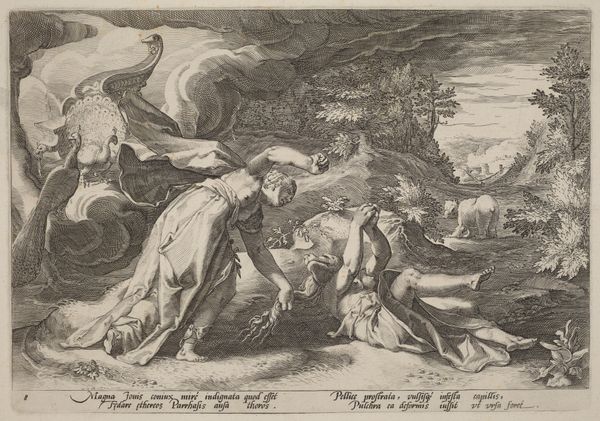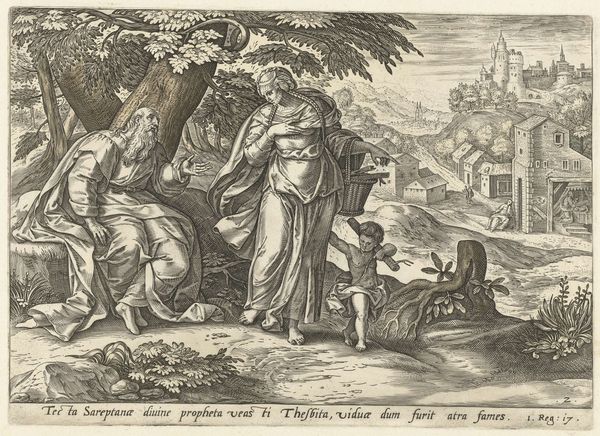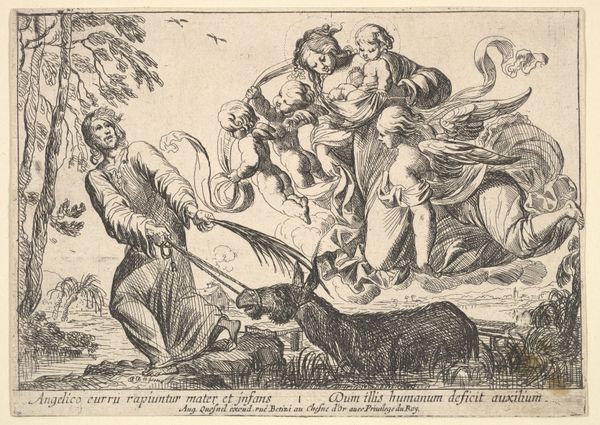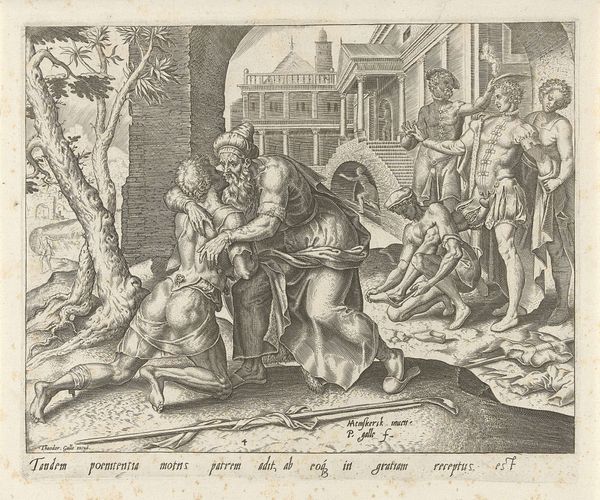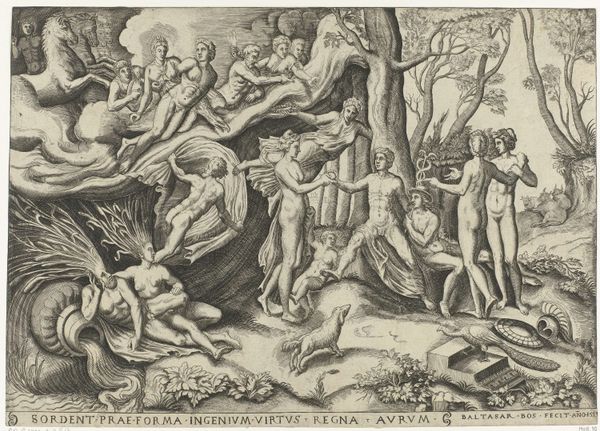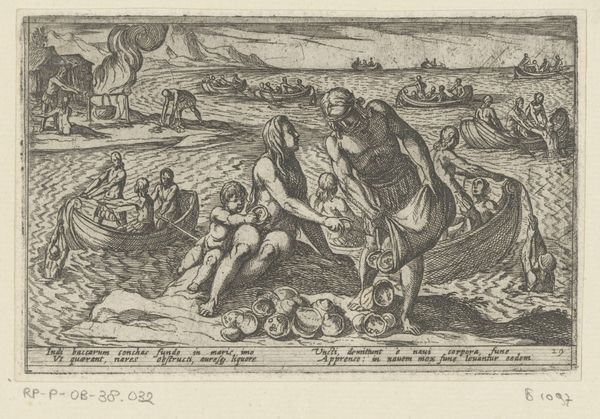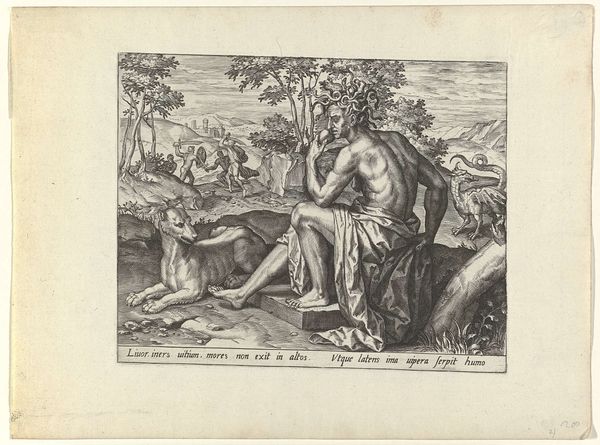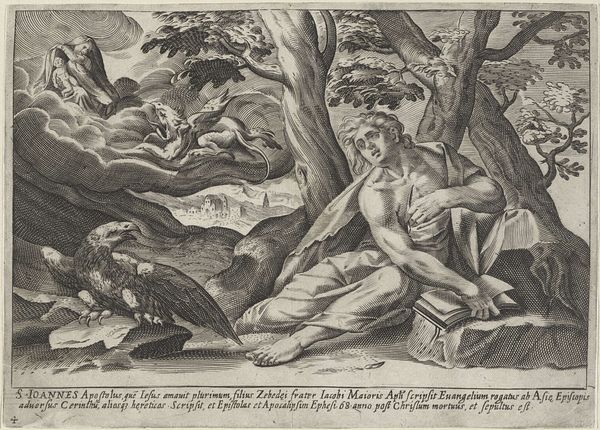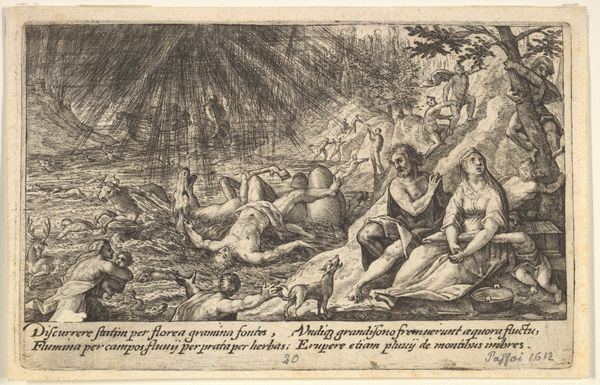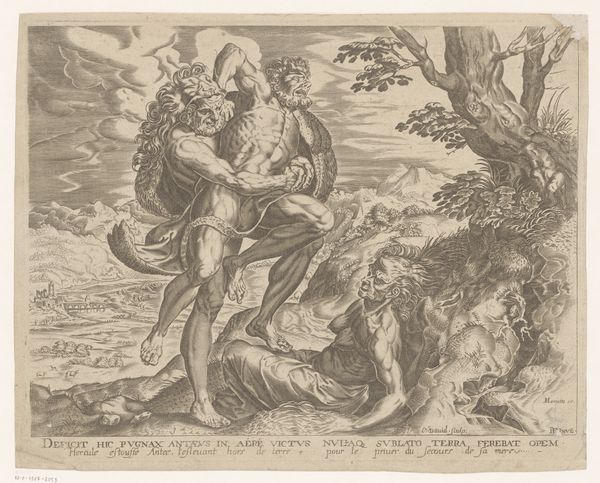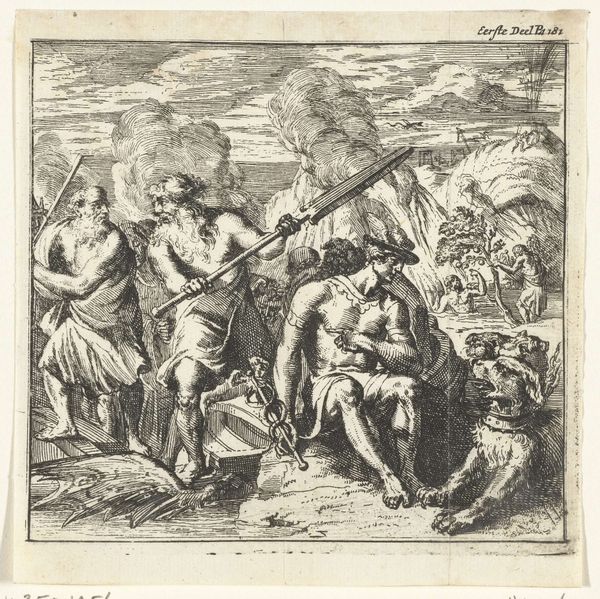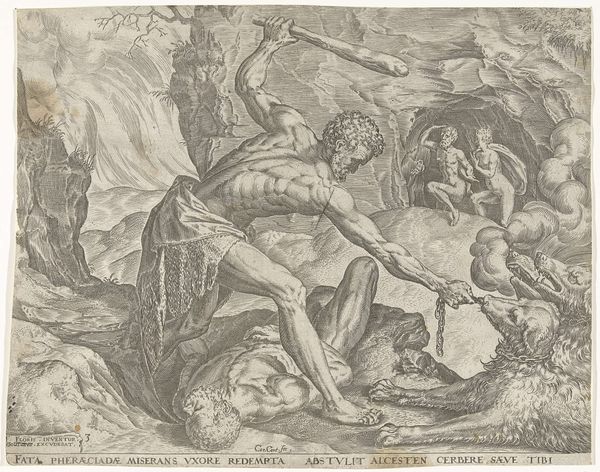
Drunkenness of Noah: Shem and Japheth cover the naked body of Noah, who lies in a tent, a male figure at far right points to Noah, from "Liber Genesis" 1612
0:00
0:00
drawing, print, engraving
#
drawing
#
narrative-art
# print
#
history-painting
#
engraving
Dimensions: Sheet: 3 9/16 x 5 5/16 in. (9 x 13.5 cm) Plate: 3 1/4 x 5 in. (8.3 x 12.7 cm)
Copyright: Public Domain
Curator: Looking at this print from 1612 by Crispijn de Passe the Elder, entitled "Drunkenness of Noah: Shem and Japheth cover the naked body of Noah," the immediate sensation I get is one of slightly panicked discretion. It’s that almost performative turning away… Editor: Indeed! It's fascinating how much emotion and narrative is squeezed into this small, precisely engraved space. The story really leaps out, even without knowing the specifics. And something about the style... it feels simultaneously antique and full of nervous energy, as if we've stumbled into something we weren’t supposed to witness. What sort of symbols stand out to you, or do you make of this piece from your point of view? Curator: Well, the tent, obviously, feels central— both literally and symbolically. It’s meant to represent a domestic space, a zone of privacy. Yet, this privacy is completely violated. And Noah's nakedness…It’s such a loaded image. In a historical and symbolic context, nakedness here stands for vulnerability and shame, a raw exposure of human fallibility. The careful gesture of Shem and Japheth covering their father speaks volumes. It signifies reverence, respect for familial bonds. But also denial. Editor: Absolutely, the turning away isn’t just a covering; it’s a psychological deflection. I think there's another fascinating duality at work: the detailed figures are juxtaposed with a landscape which is very open, classical almost and populated with what seems to be common folk engaged in collecting grapes or doing errands. On one hand, this is very private and, in the narrative, a highly specific event; on the other, the setting indicates everyday life, ordinary routines. Curator: And the pointing figure, way off to the right, could be said to represents gossip and spreading news of this event. This tension makes the whole scene so charged, doesn't it? And let's be honest, it's still relevant to how we think about privacy, family, and reputation, even centuries later. Editor: A biblical drama, rendered in the precise strokes of 17th-century engraving. The print packs a subtle yet complex commentary. It leaves you pondering the weight of both visibility and concealment. A quiet little study on what it means to avert one's gaze from the uncomfortable truths. Curator: Precisely.
Comments
No comments
Be the first to comment and join the conversation on the ultimate creative platform.
